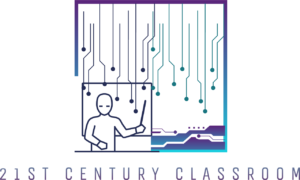In the realm of education, assessment serves as a cornerstone for evaluating learning outcomes and measuring the effectiveness of educational programs. Beyond the traditional notions of grading and testing, assessment is an intricate process that plays a pivotal role in shaping the learning journey of students and aiding educators in refining their teaching methodologies. This article delves into the nuanced world of assessment, exploring the underlying principles and techniques that constitute the art of effective evaluation.
The Importance of Effective Assessment
Assessment is not merely a means of assigning grades; rather, it is a powerful tool that provides valuable insights into students’ progress and helps tailor instruction to suit individual learning needs. Effective assessment goes beyond the surface, delving into the heart of understanding how students comprehend and apply concepts. It is a symbiotic process that benefits both educators and learners. By uncovering strengths and identifying areas that require improvement, educators can fine-tune their teaching strategies, while students gain a clearer understanding of their own progress, leading to enhanced motivation and engagement.
The Role of Formative Assessment
One of the cornerstones of effective assessment is formative assessment. Unlike summative assessment, which occurs at the end of a learning period, formative assessment is an ongoing process integrated into the teaching and learning cycle. It involves activities such as quizzes, discussions, and feedback sessions that provide immediate insights into students’ comprehension. Formative assessment empowers educators to make real-time adjustments to their teaching methods, addressing misunderstandings and reinforcing concepts before they escalate. This practice not only enhances learning outcomes but also promotes a culture of continuous improvement within the educational ecosystem.
Strategies for Effective Assessment
The art of assessment encompasses a diverse range of strategies tailored to suit various learning objectives and environments. Rubrics, for instance, provide a transparent framework for evaluating complex skills and assignments, offering students a clear understanding of the criteria by which they will be assessed. Peer assessment encourages collaborative learning and fosters critical thinking skills as students evaluate and provide constructive feedback on their peers’ work. Authentic assessments, such as project-based assignments, mirror real-world scenarios and challenge students to apply their knowledge in practical contexts. Each strategy contributes to a holistic understanding of students’ capabilities and facilitates comprehensive evaluation.
The Role of Technology in Assessment
In the digital age, technology has revolutionized the landscape of assessment. Online platforms offer educators a myriad of tools to design interactive quizzes, surveys, and multimedia-rich assignments that cater to diverse learning styles. Adaptive assessment technologies customize questions based on students’ previous responses, ensuring a personalized learning experience. Additionally, data analytics derived from digital assessments provide educators with valuable insights, highlighting trends and patterns that inform instructional decisions. However, while technology streamlines the assessment process, it is essential to strike a balance between innovation and the preservation of the human element in education.
Balancing Objectivity and Subjectivity
Effective assessment involves a delicate balance between objectivity and subjectivity. While certain aspects of assessment, such as multiple-choice questions, demand objectivity to ensure consistency, subjective evaluation methods, such as essays and creative projects, allow students to showcase their unique perspectives and critical thinking abilities. A skilled educator navigates this balance, recognizing that while objective metrics offer quantifiable data, subjective insights provide a deeper understanding of students’ cognitive and analytical skills.
Feedback as a Catalyst for Growth
The feedback loop is an integral aspect of assessment that drives student growth. Constructive feedback offers students a roadmap for improvement, highlighting areas that require attention and commending their achievements. The art of delivering feedback lies in its specificity, clarity, and positivity. Instead of focusing solely on errors, educators emphasize opportunities for refinement, empowering students to take ownership of their learning journey. Furthermore, feedback fosters a culture of continuous learning and resilience, as students perceive challenges as stepping stones to mastery.
Takeaway
The art of assessment encompasses more than meets the eye. It is a multifaceted process that intertwines with pedagogical strategies, technology, and the intrinsic motivations of learners. Effective evaluation involves keen observation, adaptation, and a commitment to nurturing holistic development. As educators, administrators, and students collaborate to unravel the secrets of effective assessment, they pave the way for a dynamic and empowered educational landscape, where learning is not confined to the classroom, but extends into a lifelong journey of growth and enrichment.

